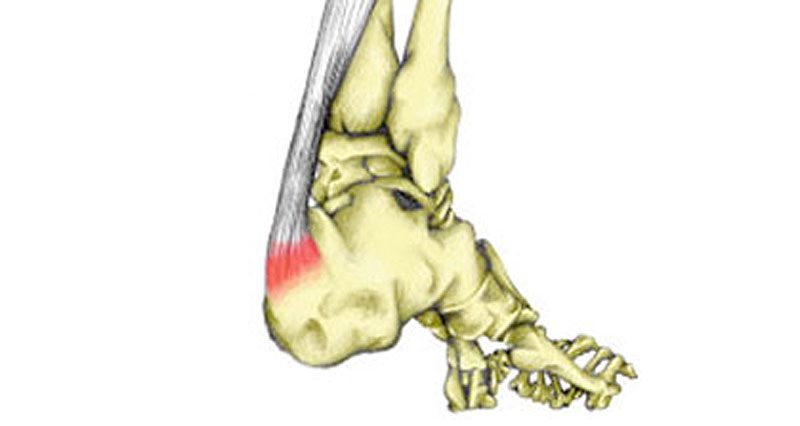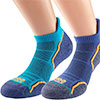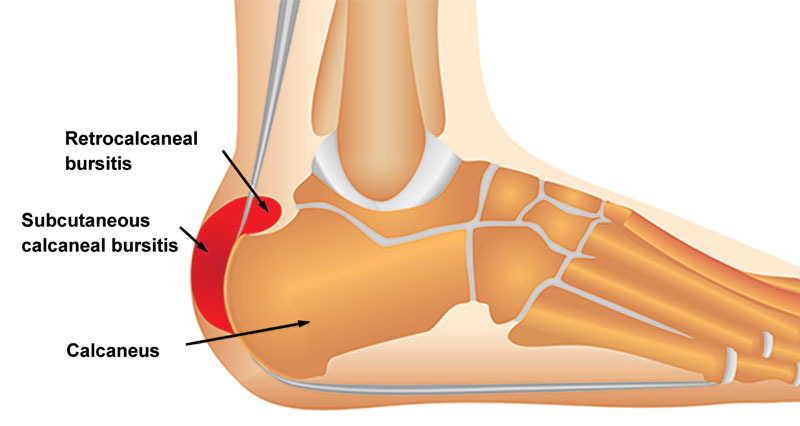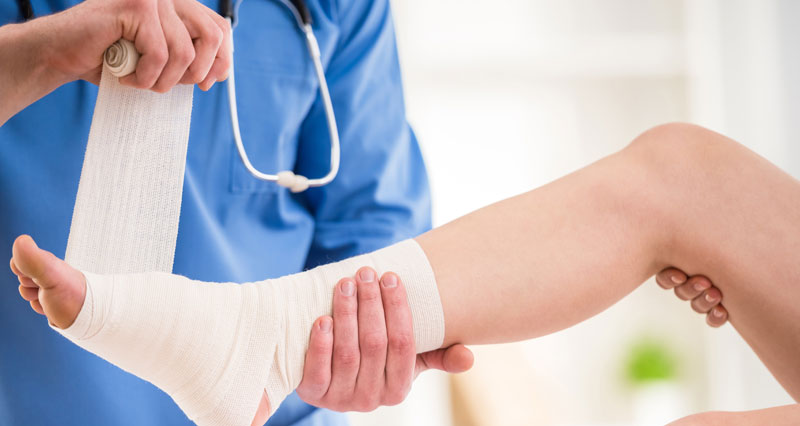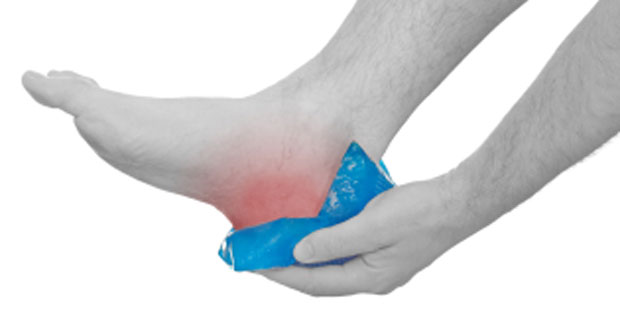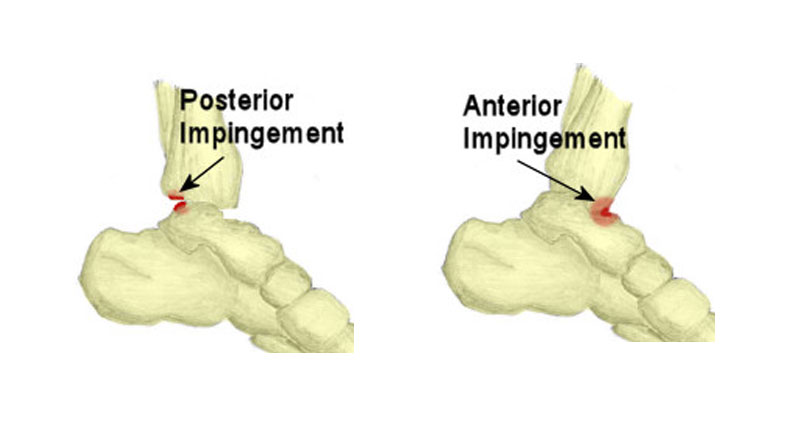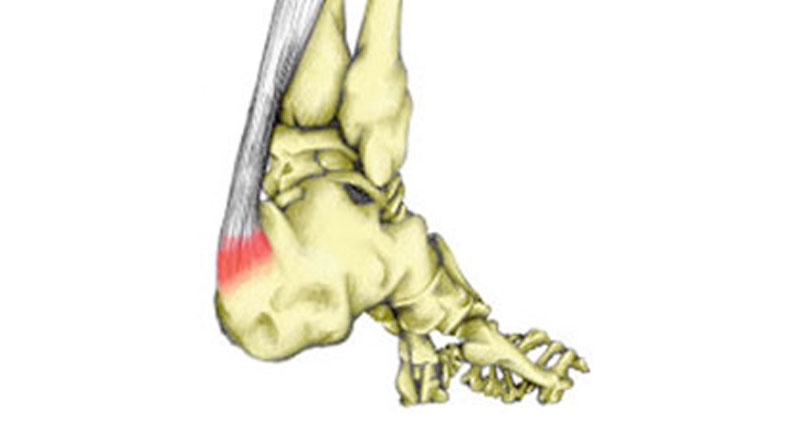Insertional Achilles Tendonitis causes pain at the back of the heel at the point where the Achilles tendon inserts into the heel bone. It is similar to Sever’s disease in children.
Symptoms
- Symptoms consist of pain at the back of the heel.
- In particular, your heel will feel tender when pressing in at the point where your Achilles tendon attaches to the heel bone (calcaneus).
- Pain can either feel sharp or more of a dull ache.
- There may be redness or swelling present.
- A lump may also be visible at the back of the heel, especially in more chronic or long-term cases. In this case, Achilles bursitis should be ruled out.
What is Insertional Achilles tendonitis?
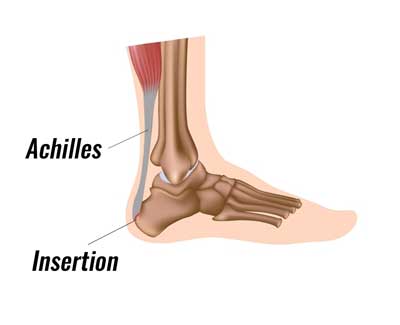
The Achilles tendon is the large tendon at the back of the ankle, which connects the strong calf muscles to the foot. Huge forces are produced through the Achilles tendon, which can often lead to overuse-type injuries, especially in athletes. The tendon is encased in a sheath and space in-between, this is called the Paratenon, which becomes inflamed when there is insertional Achilles tendonitis, especially where it attaches to the calcaneus (heel bone).
Acute injuries
Acute insertional tendonitis can be caused by repeated friction of the area. Irritation and inflammation at the point where the tendon inserts into the bone are called apophysitis. It is more common in growing children and adolescents and is known as Sever’s disease.
Adults can also suffer as a result of activities such as running or jumping. The tendon insertion becomes inflamed and may sometimes cause an avulsion injury, where the tendon tears, pulling a small piece of bone away with it.
Chronic injuries
Chronic insertional Achilles tendonitis in teens is usually due to an issue like sever’s disease where traction forces pull the tendon away from the bone at the site of insertion. This is due to growth where the tendon or muscles become tight and can be painful on activity or touch. This condition can leave a lump on the heel if chronic but was to help to take tension off the Achilles tendon. Read more on Sever’s disease.
Treatment for Insertional Achilles Tendonitis
- The most important treatment intervention for insertional Achilles tendonitis is to reduce acute pain and inflammation before it becomes chronic.
- This means rest and applying ice/cold therapy. Rest might mean complete rest, or simply changing your training for a while might be enough.
- A doctor may prescribe NSAIDs (non-steroidal anti-inflammatory drugs) to reduce pain and inflammation.
- It is important to not poke or rub the area.
- Wear orthotic insoles to correct food biomechanics
- Wear heel pads
Exercises
It is important your calf muscles are strong enough to take the loads and have sufficient endurance. However, this is an overuse injury so think of gradually increasing the load through your tendon, rather than strengthening the muscles.
Exercises and treatments are similar to those of Achilles tendonitis.
